Category: General
124th FW Airmen participate in weapons system evaluation program exercise at Hill AFB
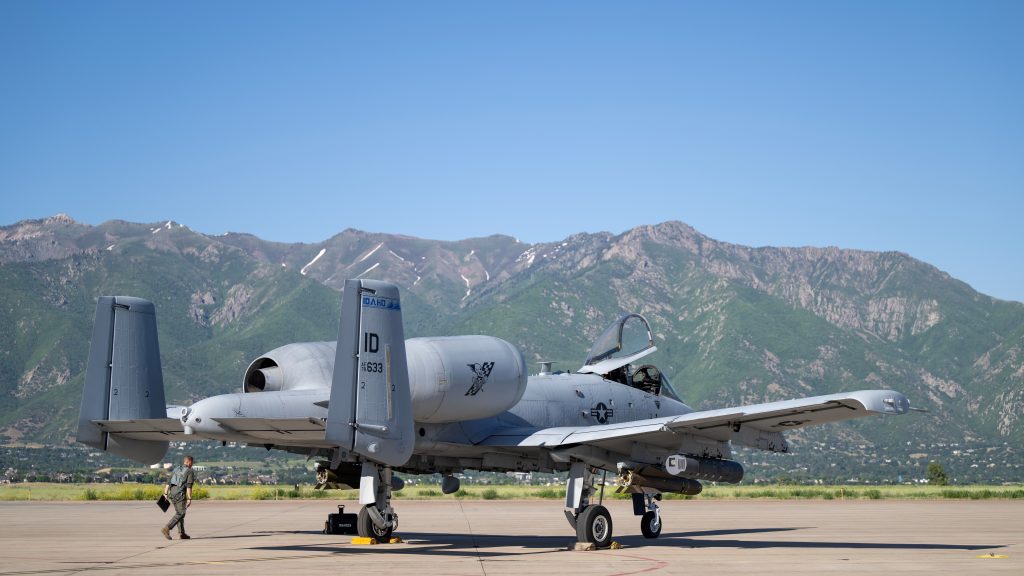
Airmen from the 124th Fighter Wing, Gowen Field, Boise, Idaho, participated in a weapons system evaluation program exercise at Hill Air Force Base, Utah, June 6-14, 2024.
The program is designed to test the employment of various live munitions and requires the efforts from various Air Force specialty codes, but focuses on the building, loading and employment of these munitions.
The use of lethal force is a serious burden and responsibility, requiring proficiency from everyone involved.
“This is a weapons training exercise,” said Staff Sgt. Alyssa Johnson, an aircraft armament systems technician with the 124th Aircraft Maintenance Squadron. “The focus is on how ammo builds munitions, how weapons loads them, and how the pilots drop them. The inspectors are making sure we are proficient at what we do.”
This is a unique and critical training event for Idaho Air Guardsmen.
“We don’t get a lot of opportunities like this in the Idaho Guard, because of where we’re stationed,” said Johnson. “Working with live munitions is critical for us.”
WSEP provides Airmen with challenges and opportunities.
“This has been a mini deployment,” said Tech. Sergeant Charles Updegraff, the senior munitions inspector for the 124th Munitions Flight. “We’ve worked long days and in a location with limited access to the equipment we normally have at home, challenging how we normally work.”
Updegraff went on to say that working through challenges prepares Airmen for real-world deployed scenarios, especially when looking at a near-peer fight. Allowing younger Airmen the opportunity to demonstrate their job proficiency and thinking on their feet, in a new and fast-paced environment.
Ammo Airmen weren’t the only ones to experience unique training opportunities.
“We had to drive all the way to the Dugway Proving Ground due to an issue with a stuck munition,” said Johnson. “You always hope that things go well, but sometimes things don’t. I was able to train on what we might experience when deployed, making sure that my crews and pilots are safe.”
Beyond the individual shop aspect of WSEP, ammo and weapons Airmen must work together to provide warheads for pilots.
“Here things are back-to-back and go, go, go,” said Johnson. “When we go downrange, ammo builds munitions; we load them, and the pilots drop them. This training prepares all of us to be successful.”
Johnson had one piece of advice when working to prepare to deploy, “There’s going to be days where things are good, and everything goes off as planned. Then there will be days where it’s more difficult. Maybe you don’t want to get out of bed, maybe it’s 100 degrees out, and you add another 30 degrees being on the tarmac. But being able to embrace the good and bad, and focus on the mission with your peers is amazing. We all get to build off each other’s energy and be able to build each other up. We’re exhausted, yes. We’re tired, but we help each other out, so that way, we’re all good in the end.”
Ultimately that is the most important takeaway when preparing for a future fight, working together, building each other up, and getting the mission done.
Idaho Army National Guard rescues injured hiker near Stanley
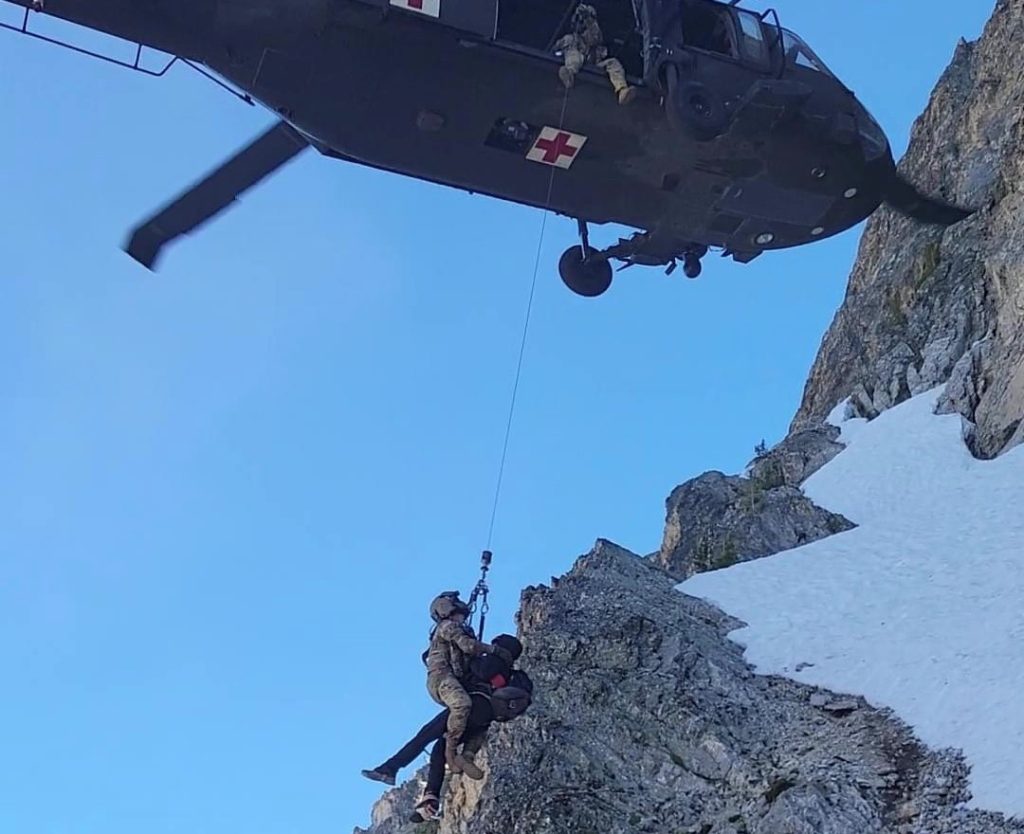
The Idaho Army National Guard’s State Aviation Group assisted Custer County Search and Rescue with the rescue of an injured hiker July 6 on Thompson Peak of the Sawtooth Range, outside of Stanley, Idaho.
The hiker, a 19-year-old male, suffered an ankle injury following a fall while rock-climbing near the mountain range’s highest peak, located approximately 75 miles outside of Boise.
“Our crew did an incredible job under some very challenging environmental conditions,” said Capt. Katherine Smith, commander of Det. 1, Company G 1st of the 168th Aviation Regiment. “The rescue required a great deal of crew coordination, as well as teamwork with the highly proficient extraction team from the Custer County Sheriff’s Office.”
The flight crew consisted of pilots Chief Warrant Officer 3 Theron Cameron and Chief Warrant Officer 3 Brennan Hoover; two crew chiefs, Sgt. Adam Brundy and hoist operator Sgt. Jessica Adamson; and one medic, Sgt. 1st Class Jared Gilstad.
The patient was initially located on a shear rock wall under a ledge. After locating him, crew members determined that there was no way to safely insert a hoist rider and extract him. The flight crew then flew to the Stanley Airport and picked up a five-person technical rope rescue team from Custer County’s search and rescue team.
“We were able to inert the team about 300 meters away from the patient using a two-wheel landing,” said Chief Warrant Officer 3 Theron Cameron, an Idaho Army National Guard UH-60 pilot.
The rescue team roped to the patient and relocated him to more favorable recovery site, where Adamson was able to lower Gilstad safely onto the ground near him. Gilstad quickly secured the patient and Adamson hoisted the pair back into the aircraft while the pilots kept the aircraft stable in challenging conditions.
“Due to the reduced power margins caused by altitude of more than 10,300 feet, the uneven terrain and the location of the extraction site, the aircrew was forced to pay extremely close attention to the aircraft limitations,” said Smith. “Lack of situational awareness in these types of situations could lead to a loss of lift or even rotor drop, requiring the aircrew to have to execute an emergency procedure to maintain stable flight.”
The flight crew transported the patient to the Stanley Airport, where he was transferred to civilian medical care.
State, Guard Conduct Cyber Discovery 2024
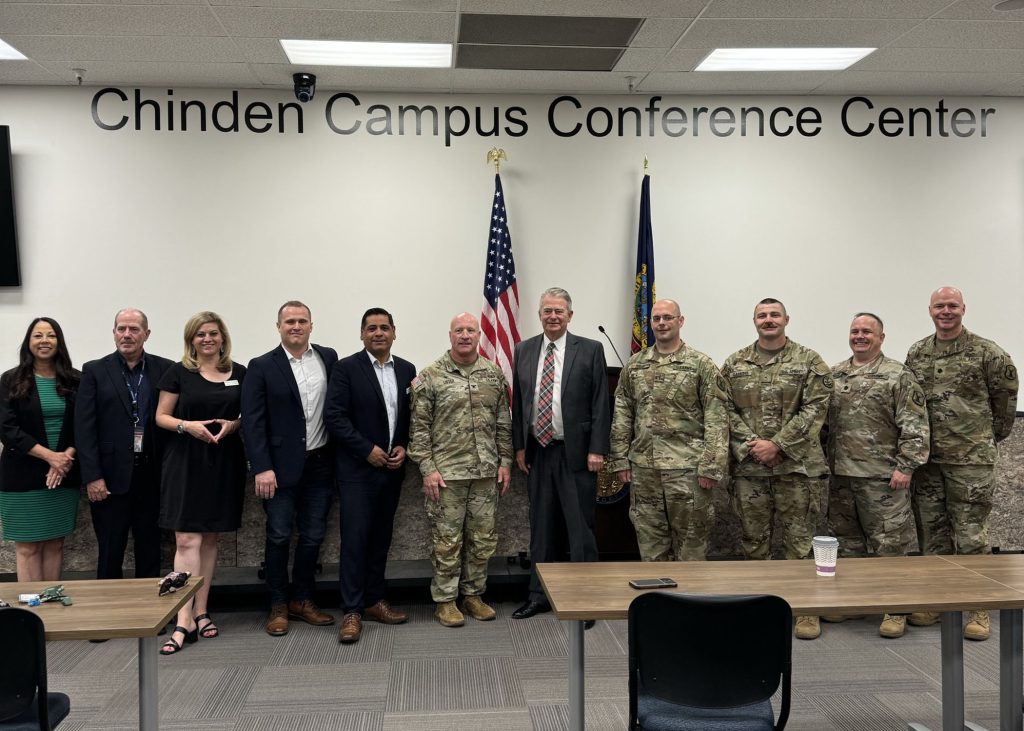
The Idaho National Guard and the Idaho Office of Information Technology Services recently hosted Cyber Discovery 2024 at the state’s Chinden Campus in Boise. Cyber Discovery is a regional cyber exercise focused on security operations, incident tracking and response. The exercise takes place within the framework of the Department of Defense’s Innovative Readiness Training program, enhancing its training value to both the state and Idaho National Guard while saving taxpayer dollars.
“One of the biggest benefits to conducting the training like this is that there’s minimal cost to either party,” said Col. Dan Lister, chief information officer for the Idaho National Guard’s Office of Information Management. “If you were to simulate this, you would be into the millions of dollars.”
During the exercise, 26 Guardsmen from Alaska, Idaho, and South Dakota Army and Air National Guards played the role of cyber threat actors while a team of 19 ITS employees, three Boise State cyber security program students and three Idaho Army National Guardsmen formed a defense team.
“We’re training to rapidly integrate Guard members for that cyber 911 that could come at any time,” said Chief Warrant Officer 4 Jerred Edgar, a defense cyber operations element officer with the Idaho National Guard. “We’re able to use the IRT to form and shape that response and rehearse it with our partners.”
Edgar said the ITS blue team made significant strides in threat detection, synchronized actions, and teamwork over last year’s performance in the exercise.
“Everything we do in these environments produces tangible results that the state can use to reduce cyber threats,” he said. “It’s process improvement, it’s building on efficiencies and identifying effective tools.”
The exercise provides exceptional training value to Guard members as well, said Lister.
“They’re training in a large-scale, real-world environment,” he said. “It really can’t be simulated and it’s very complementary to the skill sets they will use at various military echelon levels wherever they go in the world.”
Maj. Gen. Timothy J. Donnellan becomes Idaho’s 26th adjutant general
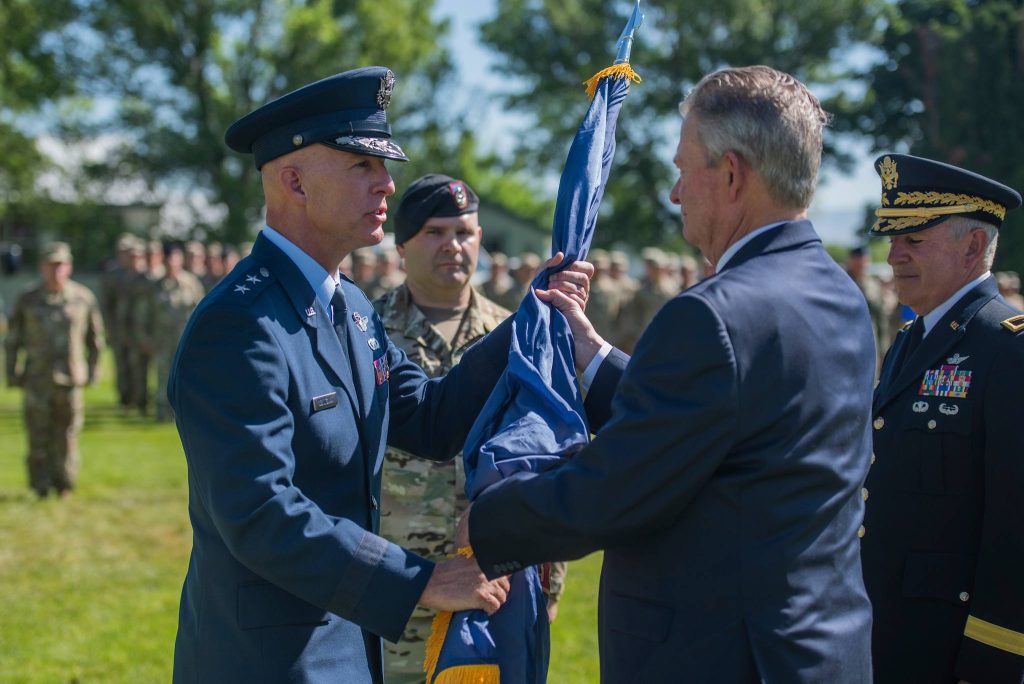
Idaho National Guard Participates in 13th Annual Return of the Boise Valley People
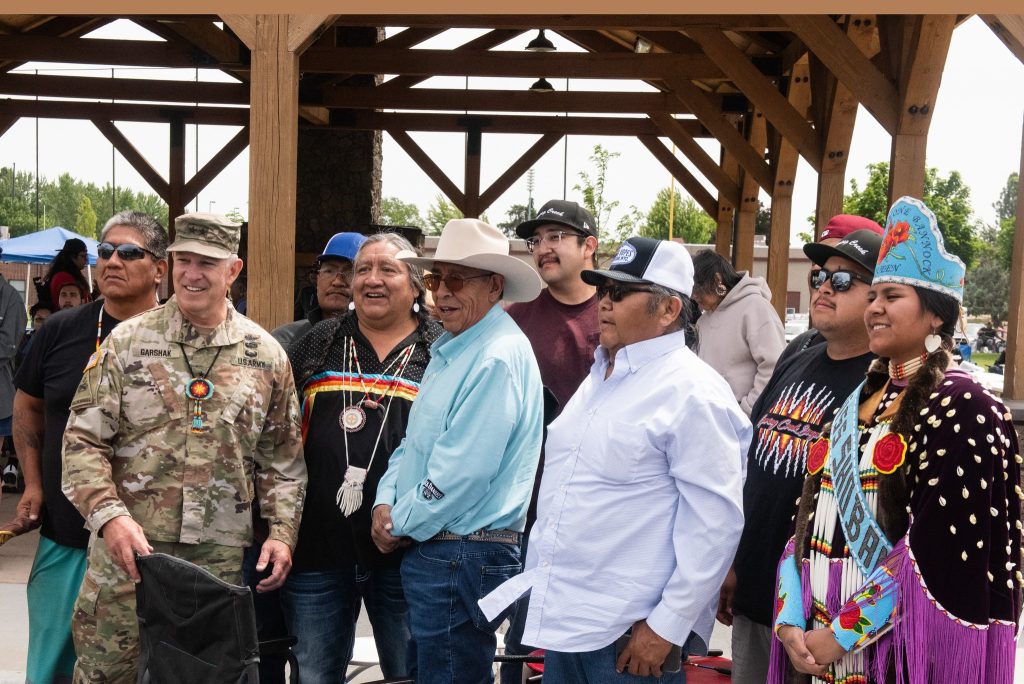
Idaho Medical Airmen Train in Field to Boost Readiness
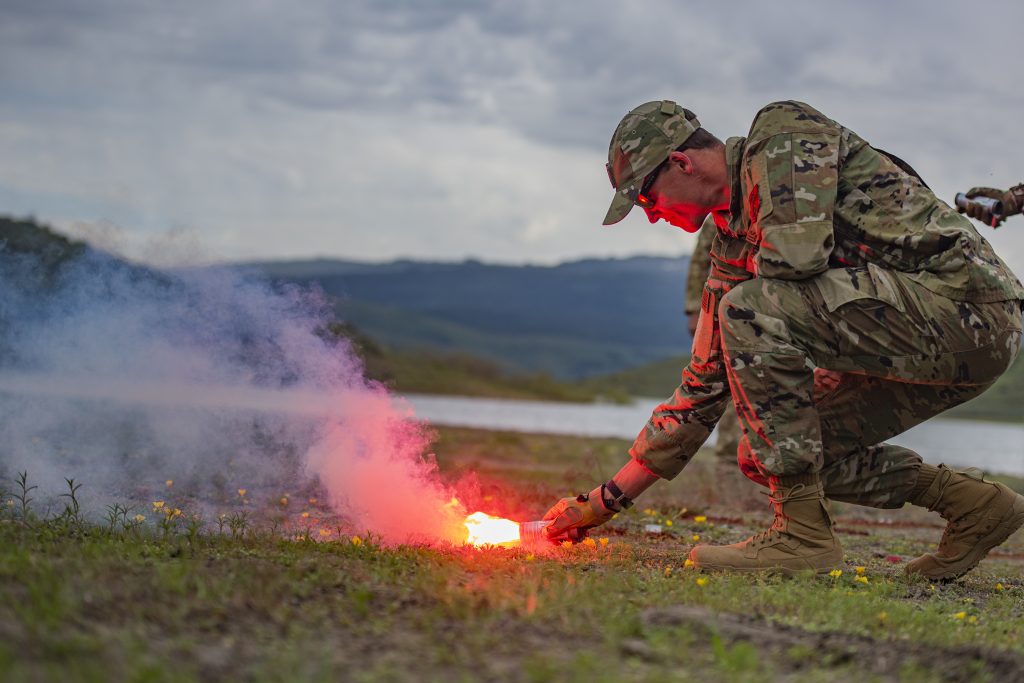
MOUNTAIN HOME, Idaho – Airmen from the Idaho Air National Guard’s 124th Medical Group trained in a field environment near Little Camas Reservoir in Elmore County June 5-8 to prepare for future deployments.
“The intent for this field training was to get the entire medical group exposed to the field environment for deployment readiness, as well as pushing comfort zones and team building,” said Maj. Mark Urban, critical care air transport team physician.
About 65 medical personnel practiced treating and stabilizing casualties using tactical combat casualty care in a simulated deployed location while defending medical structures and personnel.
Master Sgt. Raymond Perez, 124th Fighter Wing survival, evasion, resistance and escape specialist, trained the Airmen to survive in intense situations in unfamiliar surroundings.
“The medical teams will be geographically separated from the hospitals while deployed, functioning from a forward operating base,” said Perez. “I am training them on personal protection, clothing, building shelters, building fires, mental and physical health, environmental safety and protection, water purification and food sustenance. We are going to find food in the area, anywhere from vegetation on the ground to hunting animals that we will cook and eat.”
Medical personnel focused on tactical combat casualty care, point of injury, patient packaging, calling in a 9-Line medevac, patient movement, ground treatment and prolonged field care. Perez trained them on map and compass skills, signaling and recovery and making ground-to-air signals with flares for air rescue.
Air Force’s 582nd Helicopter Group trains at OCTC
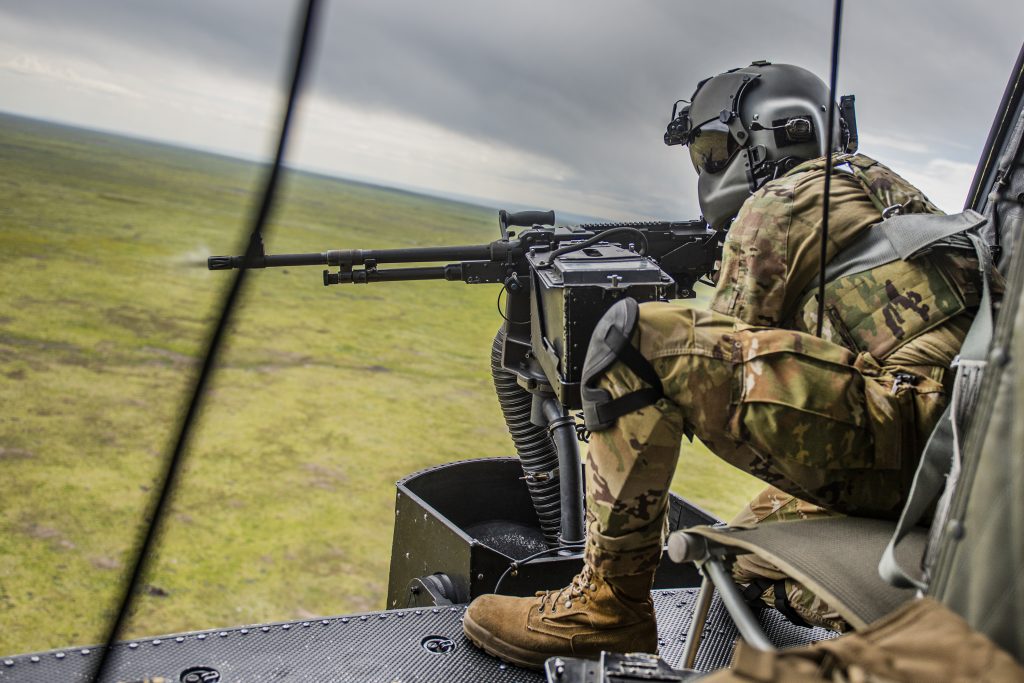
The Air Force’s 582nd Helicopter Group, conducted aerial gunnery training at the Orchard Combat Training Center April 15-26 to ensure its pilots and flight engineers are ready and able to provide airborne security operations.
The squadron, headquartered at F.E. Warren Air Force Base in Cheyenne, Wyoming, is geographically separated with squadrons in Montana, North Dakota and Wyoming, Its members fly security response missions, enabling key Task Force 214 operations supporting nuclear security missions for 450 intercontinental ballistic missile sites throughout the region.
The training, which incorporated elements from all three states, serves a dual purpose, said Air Force Capt. Nick Curren, a UH-1N Huey pilot and mission commander for the training evolution. Flight engineers are focused on conducting pre-flight weapons checks, remediating weapons malfunctions and engaging targets on the range, while pilots are focused on maneuvering the aircraft to maximize engineers’ opportunities for success. The end result should be a tighter, more proficient crew.
Curren, along with many of his fellow Airmen, is training at the OCTC for the first time. Most of the squadron’s similar training exercises take place at bases in Canada, Minnesota, Utah and Wyoming, but the OCTC’s reputation and amenities made the decision to train in Idaho an easy one, he said.
“We’ve only ever heard good things about the range,” said Curren. “This is also my first time as a mission commander, and the people here have been great about answering all my questions and helping me make sure we are doing everything we need to do to make this a success.”
Idaho’s OCTC is a premier joint combined arms training site with 171,000 acres and 23 world-class ranges.
Youth ChalleNGe Academy breaks ground on new barracks

The Idaho Youth Challenge Academy broke ground on a new barracks building April 9 in Pierce. Representatives from the Idaho National Guard gathered for the ceremony along with staff members from Gov. Brad Little’s office.
The $13.5 million, 18,000 square foot building will replace temporary billeting facilities currently in use at the academy. The new barracks also allows for potential expansion of the program with room to house up to 180 students and cadre.
Academy Director Trevor Sparrow said building strong relationships has been an important aspect of its success and growth over the years.
“We are so grateful for the support of all of our partners around the state from the cadets who attend, their families, local businesses and communities, the Idaho State Legislature and the Governor’s office,” said Sparrow. “This building solidifies the commitment that Idaho has to ensure the Idaho Youth ChalleNGe Academy stands ready to ensure a legacy of excellence for decades to come.”
The Idaho Youth ChalleNGe Academy opened its doors in 2014 with the mission “to intervene in and reclaim the lives of at-risk youth to produce program graduates with the values, skills, education and self-disciple necessary to succeed as responsible and productive citizens and adults.” Since then, the academy’s focus on providing education and developing employment and life skills among its student body has helped more than 2,000 Idaho youth earn traditional or general education diplomas.
Maj. Gen. Michael Garshak, Idaho adjutant general and commander of the Idaho National Guard, served as the presiding official during the ceremony.
“Two thousand and seventy-five young men and women from the state of Idaho have completed this and have really improved the citizenship and the future for our state,” said Garshak. “It’s time now that we move out of a temporary facility and build permanent barracks because I think the Youth ChalleNGe Academy has demonstrated that it is here to stay.”
The project is slated to be completed in November 2025.
Flyers Fueling the Fight: IDANG pilots refuel A-10s during training exercise
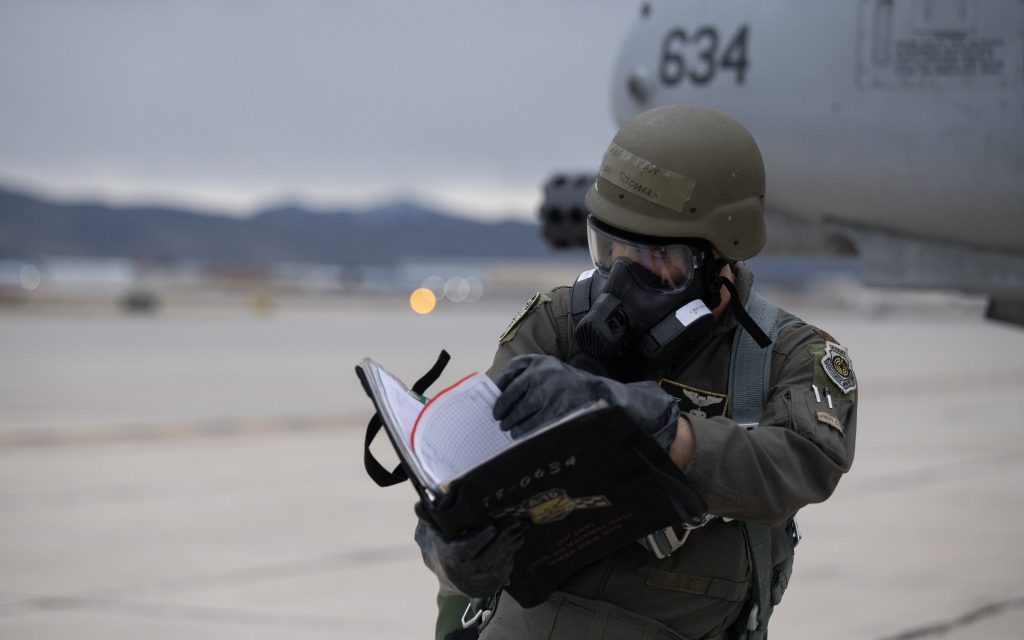
A-10 Thunderbolt II pilots from the 190th Fighter Squadron, part of the 124th Fighter Wing, Idaho Air National Guard, participated in a training exercise Feb. 1-2.
The pilots landed at Jocelyn Field, Magic Valley Regional Airport in Twin Falls, turned their own jets, and continued training exercises.
Landing at an airport that military pilots don’t use every day allows them to practice agile combat employment (ACE), which is a proactive and reactive operational scheme of maneuver to increase survivability while generating combat power.
“When thinking within this ACE concept, we may land in a place austere enough that there isn’t support by crew chiefs, especially A-10 trained crew chiefs,” said Col. Ryan Richardson, 124th FW deputy commander, “so pilots need to be familiar with how to service their own aircraft on the turns.”
The training exercise was designed to enhance agility and resilience, preparing for issues that may occur in a combat mission or high-threat environments, said Col. J.R. Williams, 124th Operations Group Commander.
“Specifically, the 124th Fighter Wing is testing command and control capabilities and concepts of operation while generating air power from different locations, all at a moment’s notice,” Williams said.
Although prior coordination with other military units, local airport authorities, and community partners took place, this simulated training mirrors what military aircrews might be faced with in a deployed environment.
“This is a 190th Fighter Squadron focused exercise,” said Richardson, “but we’re getting lots of support from other agencies.”
The IDANG pilots also practiced combat search and rescue with support from the Idaho Army National Guard’s UH-60 Black Hawks out of Gowen Field. Additionally, Navy EA-18G Growlers from Electronic Attack Squadron 135 in Washington integrated into some of the tactical training in the airspace. The A-10s were supported inside of the airspace by the 266th Range Squadron, an IDANG tenant unit located at Mountain Home Air Force Base in Idaho. They provided threat emitters to provide a realistic, contested training scenario.
“The flying training itself is similar to the training that we do daily, but the integration and the simulated war-time scenario of the exercise makes it more complex,” Richardson said.
A C-130 Hercules from the 152nd Airlift Wing, Nevada Air National Guard, also supported the exercise by transporting military members from Gowen Field to Twin Falls. Crew chiefs arrived at the regional airport and served as instructors for the pilots and as safety observers to make sure everything was done correctly.
“We’re proud and excited to be able to operate out of Twin Falls, and we’re grateful for the support of the airport,” said Richardson. “This is fantastic training that’s going to make us more capable in both our federal and our state mission. We are extremely fortunate to be able to get this kind of training in our backyard.”
Total Force: Army, Air, Navy train together in mass casualty combat exercise
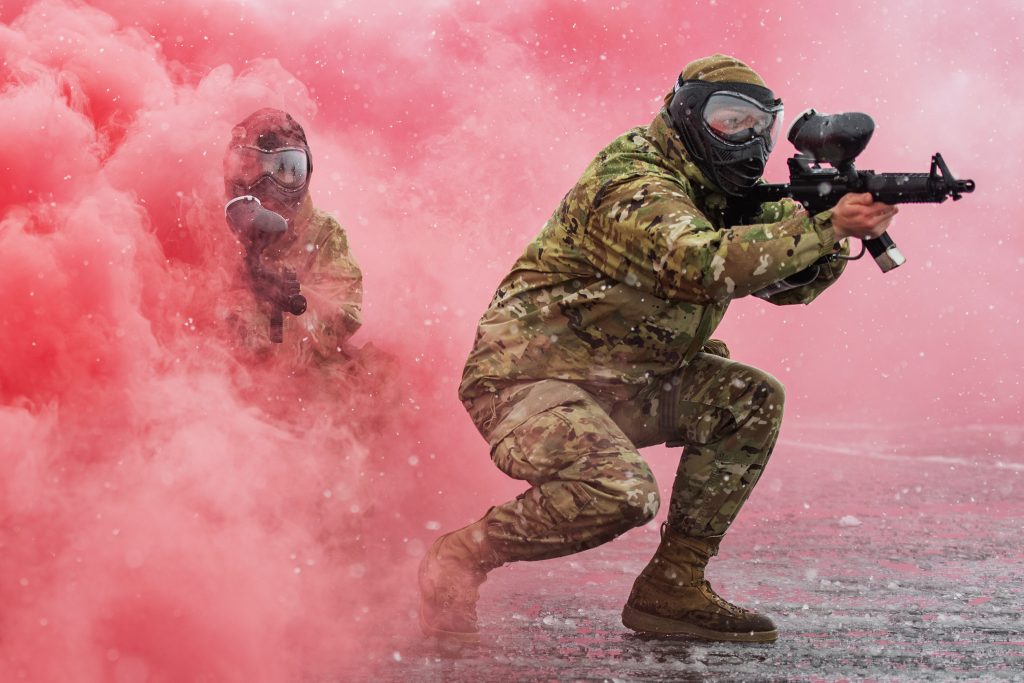
Master Sgt. Becky Vanshur/Idaho Military Division Public Affairs
BOISE, Idaho – A deep breath in, deep breath out. An Airman from the Idaho Air National Guard holds his weapon steady in front of him, pressing it against his shoulder, finger on the trigger, his body low to the ground. He takes a small, strategic step into the plume of smoke swirling around him. Surrounded by a blanket of red smoke makes it hard to see his battle buddy but he knows his counterpart, a Soldier from the Idaho Army National Guard’s Medical Detachment, is close behind him.
The red smoke is used to conceal the medical team’s movements as they defend their medical structures and personnel who are being ambushed while conducting Tactical Combat Casualty Care on the battlefield. The two Guardsmen were among approximately 200 Idaho National Guard Soldiers, Airmen and their active duty and Navy Reserve counterparts who joined forces for a mass casualty combat exercise, Feb. 1-4, near Gowen Field.
“The main focus of this joint services training was to all come together, learn each other’s jobs and create multi-capable Soldiers, Airmen and Sailors on top of learning how to respond in mass casualty scenarios,” said Senior Master Sgt. Davis Nguyen, the 124th Medical Group function area manager. “Equally important, was the ability to perform medical care while under mental and physical stress.”
The Idaho Air National Guard’s Critical Care Air Transport Team, the ground surgical team and other medical personnel from the 124th Medical Group conducted the exercise with the Idaho Army National Guard’s Charlie Company, 145th Brigade Support Battalion Medical Detachment and medevac Soldiers from the 1st of the 168th Aviation Regiment; the Navy Operational Support Center; and active duty Airmen with the 366th Medical Group from Mountain Home Air Force Base.
During the exercise, Soldiers, Airmen and Sailors learned each other’s roles on the battlefield and in the sky. The Idaho Army National Guard’s State Aviation Group incorporated UH-60 Black Hawk helicopters and pilots who responded to 9-Line medevac requests, transporting critical care patients with CCATT officers and medevac Soldiers who stabilized them onboard while flying through simulated combat zones until they reached a higher echelon of care.
“All of our pilots need to practice this piece of the exercise and learn how to fly with patients in the back,” said Chief Warrant Officer 3 Theron Cameron, instructor pilot and medical evacuation officer from the 168th Aviation Regiment. “We need to learn the CCATT’s language to know if they are in the middle of performing a procedure as it cues us to fly as smoothly as possible through the combat areas, while communicating back that we may need to aggressively maneuver around danger.”
Airmen from the 124th Fighter Wing’s Security Forces provided combat lessons on defense and protection, 360-degree security, care under fire and tactical movements with red smoke concealment.
Colin Yates, an Idaho Peace Officers Standards and Training instructor specializing in wounds and trauma for tactical medicine, created realistic wounds on 124th Fighter Wing’s Student Flight role players acting as casualties for a more real-world training experience of TCCC on the battlefield.
Sailors from the NOSC provided the medical logistics support for the simulated deployment location, while learning from both Army and Air medics on tactical field care, casualty evacuation and Roles 1-4 medical care facilities.
“It’s anticipated in future conflicts, there will be a lot more integration with forces. We need to interact with each other and speak each other’s languages,” said Maj. Mark Urban, CCATT physician. “This exercise was developed with that in mind, being able to integrate is really key to that Total Force concept.”
 Official Government Website
Official Government Website